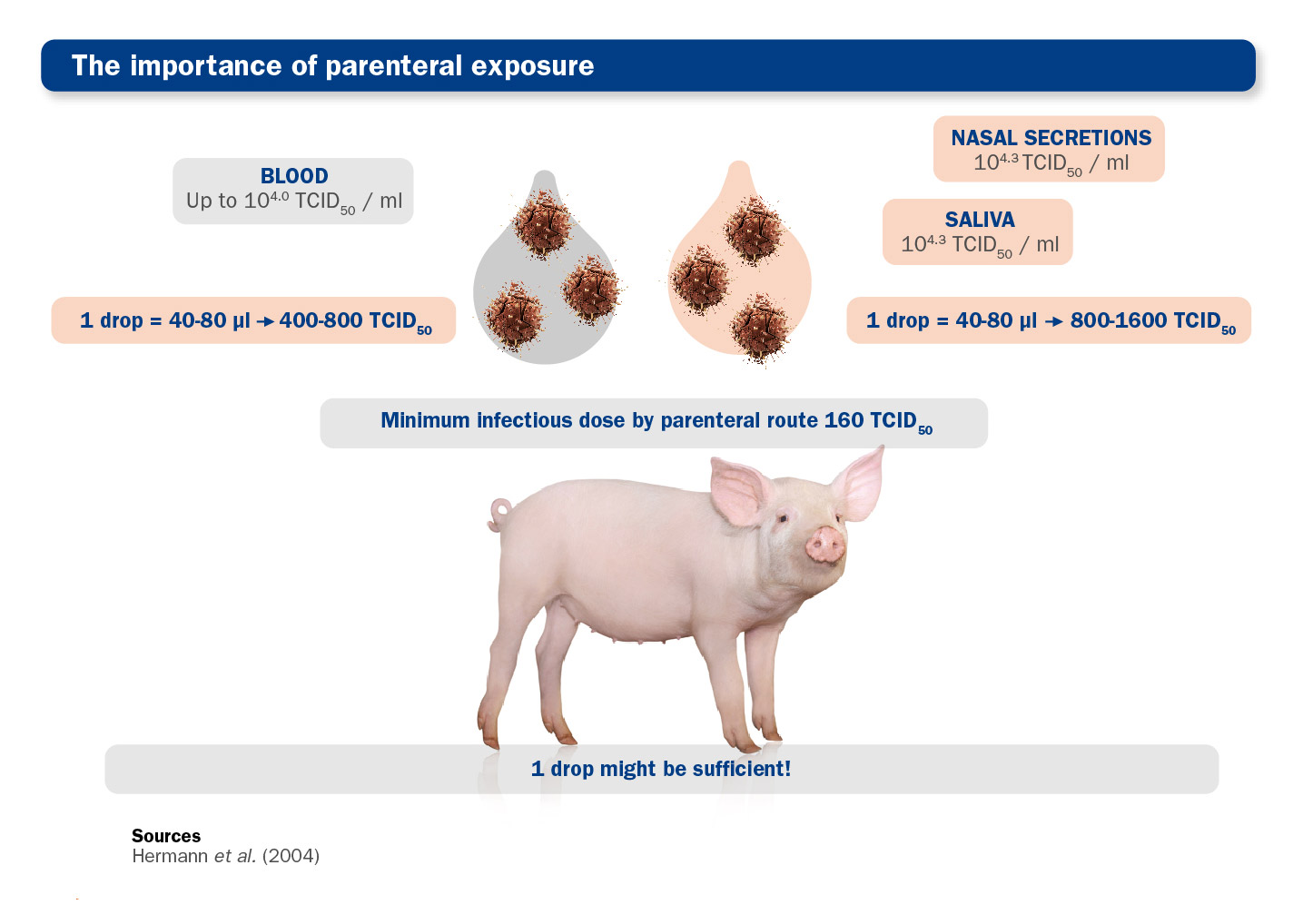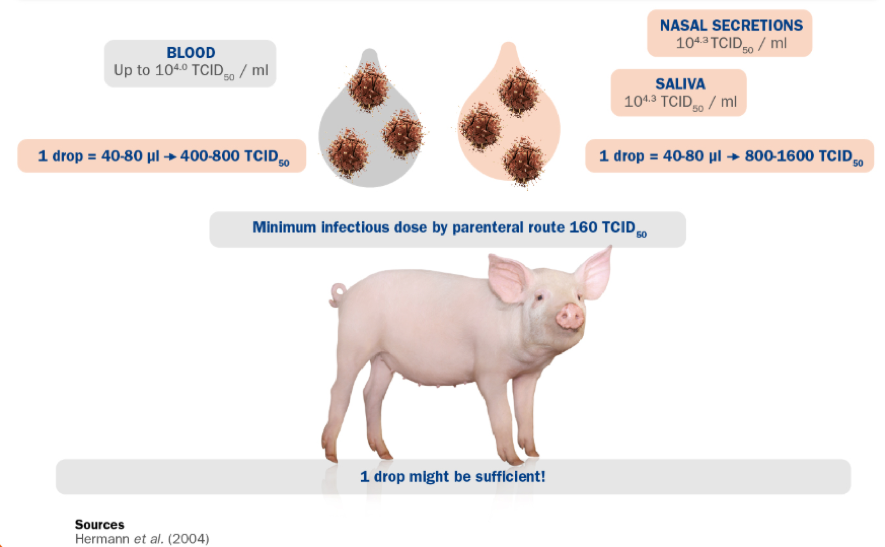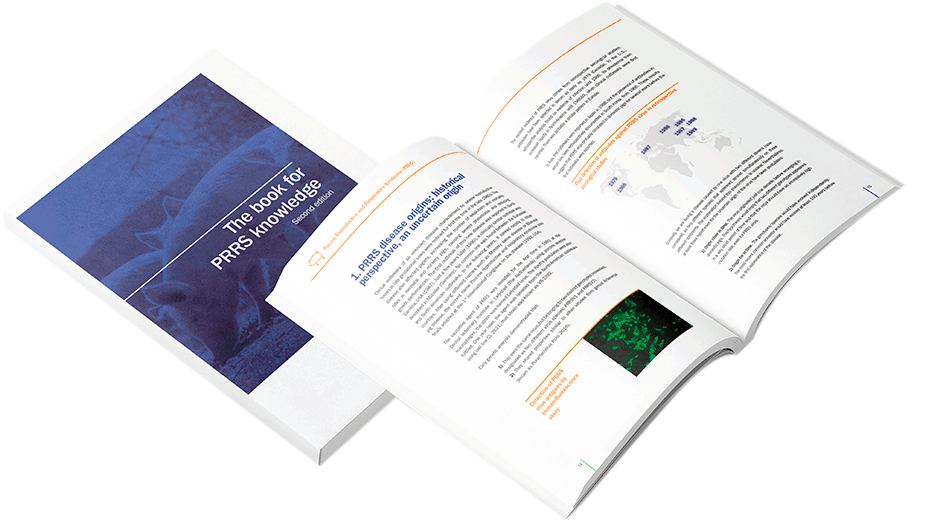The iatrogenic transmission by contaminated needles can indeed be a source of PRRS virus and other diseases transmission – this has been proved in several controlled experimental studies.
In the field, it is difficult to estimate how often this happens because there are several other potential routes of transmission.
A review from Spain from 2016 (Pileri and Mateu Vet Res, 2016) provided a very illustrative calculation of how little blood volume is needed to transmit the PRRS virus.

FIGURE 1: The importance of parenteral exposure in the PRRS virus transmission. Pigs are extremely susceptible to infection by parenteral exposure; very few PRRS virus particles are sufficient to infect pigs by this route (10-102.2 TCID50/mL).
Here is a slightly revised quote from the paper: “In the peak of the viraemia, infected animals have a viral load of at least 103 to 104 TCID50/mL.
Assuming a minimum infectious dose (MID) of 101-102 TCID50 for the percutaneous route, blood volumes of 1–10 µL could be sufficient to produce transmission”.
The tip of the needle may easily be contaminated with 1–10 µL blood/exudate from the last pig injected.
Changing needles frequently is important for many other reasons, but in relation to PRRS virus the needle must be changed at least between pens to avoid the needle becoming a vector and contributing to transmission within the herd.
You can ask your own question! Visit Pig333.com and submit your question to the experts.

National Veterinary Institute of Denmark




